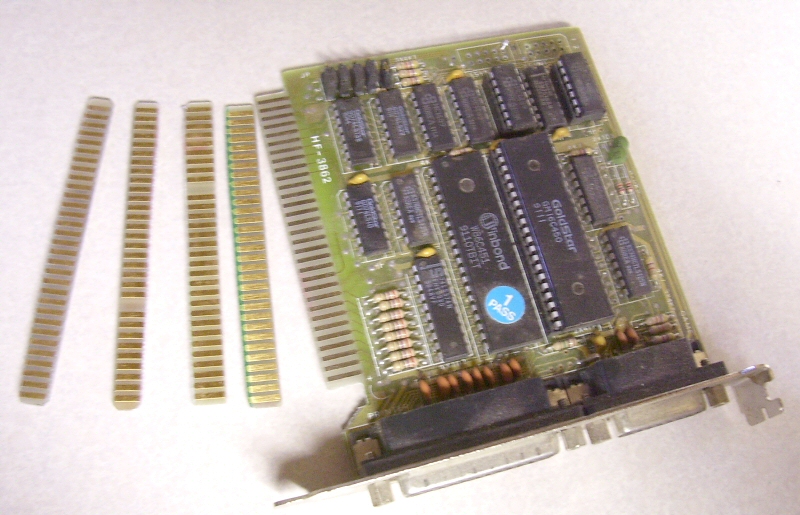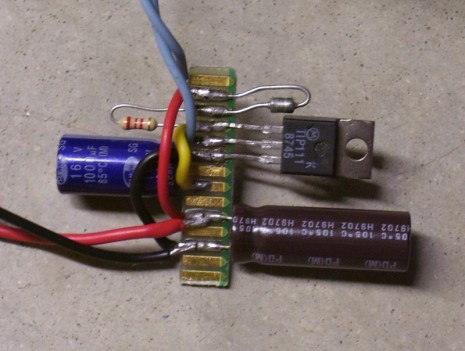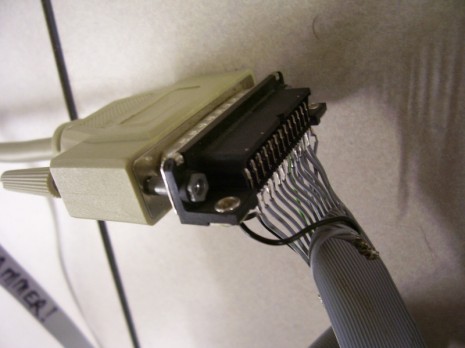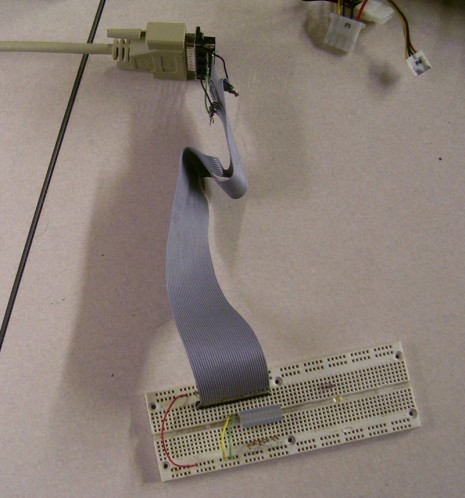Recycling old ISA cards
I’ve long been a fan of solderless breadboarding. And frankly any kind of breadboarding, even the soldering type. When you need to whip out a circuit fast, don’t have time to etch a board, here are some of my tricks.
Pictured above is what I consider a very cool way to recycle those old ISA-bus expansion cards you have lying around from a few decades ago of computer history. As I am also into woodworking, I have a bandsaw that very nicely zips off the card edge connector of these boards. The resulting 3/8″ wide strips of high quality high strength fiberglass PCB make excellent solder-breadboarding terminals.
Here’s an example of an ISA card-edge in use as a circuit board. This is on an exercise-bike-auto-alternator adaptation, the circuit detects the charging voltage of 14.5 volts and clicks some relay points closed to only send power to the output while the alternator is charging. There will be a separate page about this project, the main thing here is to demonstrate somewhat of a “squashed bug” construction method, although less squashed and more organized by the scrap of PCB that can be sawn off of an old ISA card. PCI would probably work too, but the spacing is much closer, double that of ISA.
These card edges also make nice stiffeners for solderless breadboarding breakouts. Here’s a parallel port adapter cable that I made very quickly one evening that plugs into a parallel extension cable (or even the port itself, but its a bit short). I brought out the 3 registers present on a parallel port, the data register, status register, and control register, in very nice sequential order so that different things can be tested on the solderless breadboard. Shown in this picture is a LED display that shows the TTL level of the data register. This circuit also has the Busy and Paper Out status lines grounded so that I can send a byte directly from a dos prompt to the display, effectively controlling all 8 LED’s just by sending a file out the parallel port.
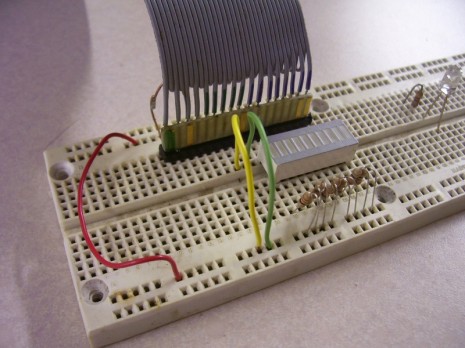
The socket end of the parallel breakout cable. Another recycled computer part, the male db25 connector from an old ZIP disk drive.
Here’s a shot of the entire parallel breakout cable, this ribbon cable had been an IDE cd-rom cable at one time.
